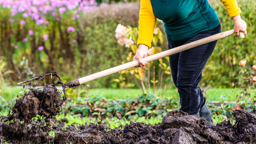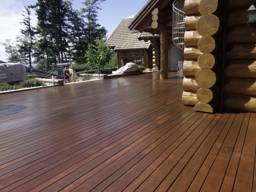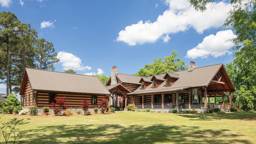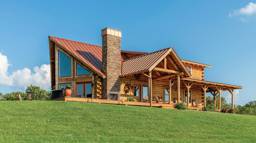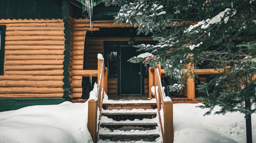
One of the most alluring parts of buying or building your own log or timber home is the natural beauty of the wood. Gorgeous, grand timbers on homes like these are known for their strength, but they’re not invincible. The proper care starts at the very beginning and continues throughout the life of the home with some simple, routine maintenance. Not sure where to start? Here are the basics to make sure your home is in tip-top shape for years to come.
PLAN AHEAD
Incorporate roof overhangs.
Safeguard your exterior logs by adding roof overhangs that are at least 3 feet deep, which will help protect exterior walls from excessive moisture and sun exposure. As an added benefit, it’s the perfect excuse for a wraparound porch. And who doesn’t love a wraparound porch?
Consider a humidifier.
Yep, although you want to keep exterior wood as dry as possible, low humidity is one of the biggest enemies on the inside of your home. It’s important in a timber frame home to have a humidifier — not a de-humidifier — as part of your HVAC system. A humidifier can help keep humidity at the ideal level, and it boasts added health benefits for the inhabitants as well.
PROTECT AND PRESERVE
Stain and seal.
There are many products used to seal and protect homes with wood details. When exposed wood starts to fade, it is time to reapply another coat of stain. If you put it off until the stain is completely broken down or faded, you have waited too long, and you may have to strip and start over. Pigmented stains and products infused with UV combatants will help mitigate the damaging effects of the sun as well.
Test, test, test.
To test the integrity of your home’s stain, spray your exterior wood surfaces with water (a hose will do just fine) in several places. If the water beads up, your preservative is working to keep water out. If dark, wet patches appear on the wood, water is seeping in, meaning a fresh coat of preservative is needed.
DON’T FORGET EXTERIOR ELEMENTS
Cover gutters.
A mesh covering over your gutters and downspouts will help keep debris out while allowing rainwater to filter through. This prevents moisture from backing up under the eaves and saturating your exterior logs.
Tend to topsoil.
Be sure to inspect the ground around your foundation for accumulation of water. The soil should slope down to promote adequate drainage away the area. If the soil has compacted, causing a negative slope, you may need to correct this with a new layer of fresh topsoil.
Strategize landscaping.
It’s best to keep ground cover and mulch at least 3 feet away from the bottom of your lowest wood pieces. A greenery-free perimeter will deter debris, bugs and excess moisture, helping to prevent mold, insect and water damage. It’s also important that tree canopies be kept away from your roof to minimize the accumulation of fallen leaves and twigs.
KEEP IT UP
Create a check-up routine. Regular check-ups twice a year (spring and fall are best) are the perfect time to walk around your house and monitor any problems that arise. Some things to look for include:
- Upward-facing checks (separation in the wood fibers)
- Breaches in the chinking or sealant
- Rotting areas
- Window frames/sills and other spots that may get overlooked in routine maintenance
- Mold or mildew buildup, often showing up in the form of a black or grayish-green film




